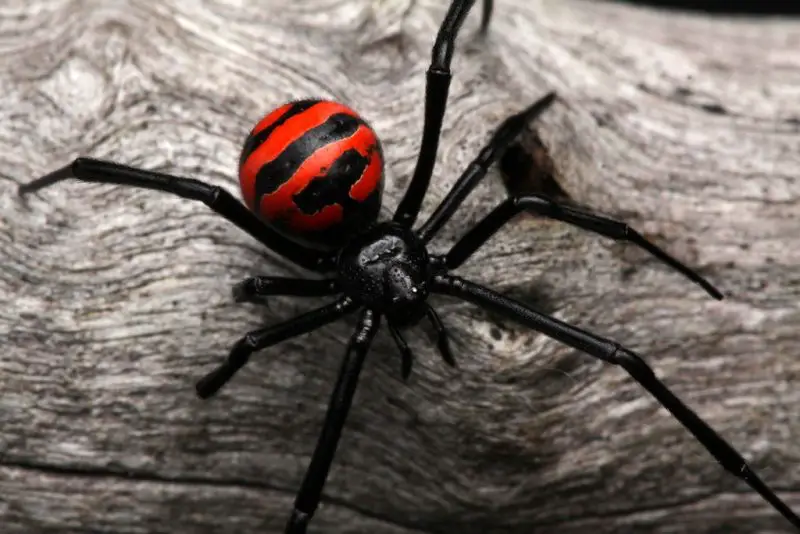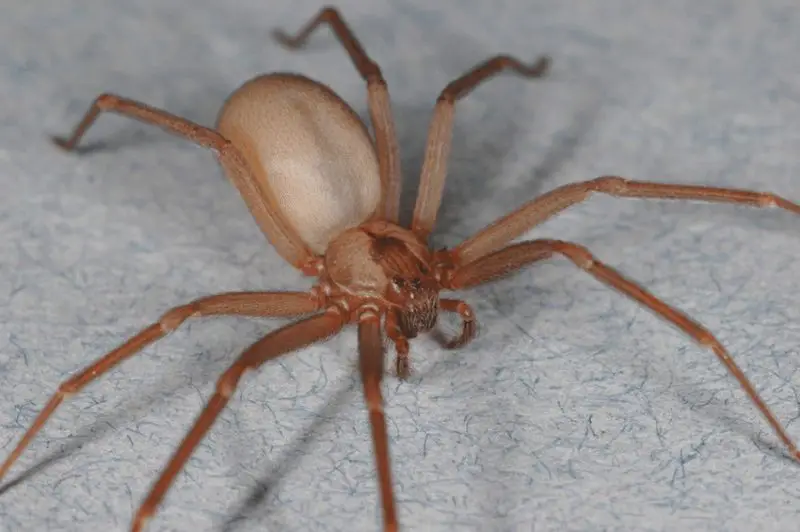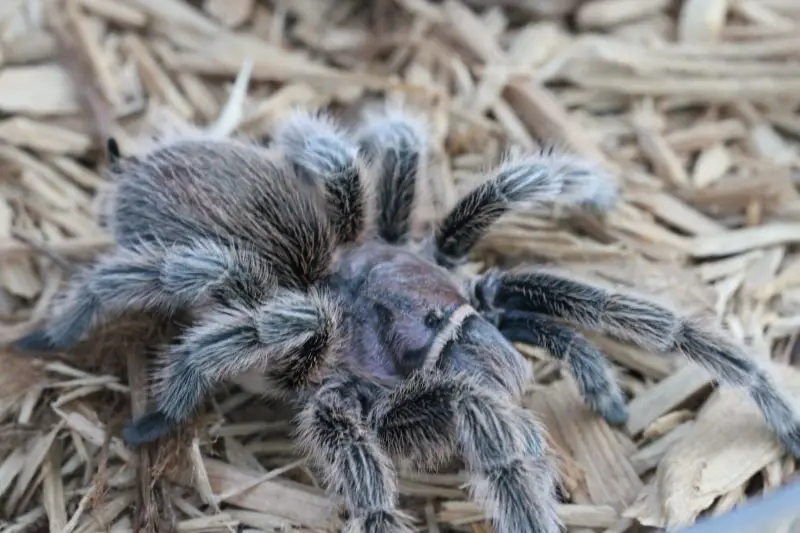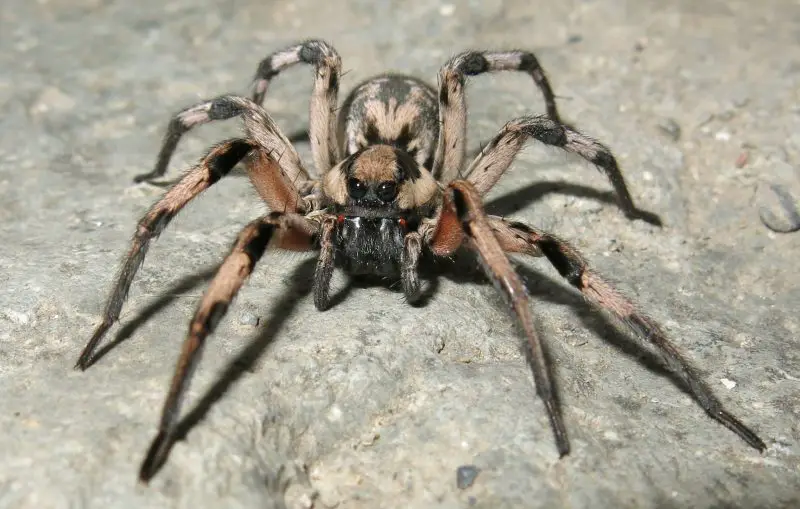New Mexico hosts several fascinating spider species, but some of the most important to know about are the venomous spiders in New Mexico. These spiders can deliver bites that range from mild to medically significant, making identification essential for residents and visitors alike.
In this article, we’ll explore the four most notable venomous spiders in New Mexico, highlighting their key features, behaviors, and habitats. With clear pictures and identification tips, you’ll learn how to spot and avoid these spiders safely.
Whether you’re hiking in the desert or working around your home, understanding the risks posed by venomous spiders in New Mexico can help keep you and your family protected while appreciating the important role these creatures play in the local ecosystem.
Common Venomous Spiders Found in New Mexico
Black Widow Spider (Latrodectus spp.)

The Black Widow Spider is one of the most well-known and medically significant venomous spiders in New Mexico. Adult females are easily identified by their shiny, jet-black bodies and the characteristic red hourglass marking located on the underside of their round, bulbous abdomen. This bright red marking acts as a warning signal to predators and humans alike. Females typically measure around 1.5 inches (38 mm) when including their legs, whereas males are smaller, lighter in color, and less venomous. The sexual dimorphism is quite pronounced, with males often exhibiting brownish tones and lacking the distinctive hourglass shape, making them less conspicuous.
The venom of the Black Widow contains a powerful neurotoxin called latrotoxin, which interferes with nerve signaling and causes symptoms such as severe muscle cramps, spasms, and intense pain. Other effects may include sweating, nausea, increased blood pressure, and, in rare cases, difficulty breathing. Despite the potency of their venom, Black Widow bites are seldom fatal due to the availability of medical treatment, and symptoms typically subside within a few days to a week with proper care. Children, elderly individuals, and people with compromised immune systems are generally more vulnerable to serious complications.
Behaviorally, Black Widows tend to be shy and reclusive spiders that avoid confrontation. They weave irregular, tangled webs in dark, protected locations such as woodpiles, garages, sheds, hollow logs, and under rocks or debris. They prefer areas that provide shelter from predators and weather, making human structures ideal habitats. The spiders are mostly nocturnal, becoming more active at night when they hunt for insects trapped in their webs. Mating occurs in late spring and summer, after which females may become more aggressive in defending their nests.
In New Mexico, Black Widows are widely distributed throughout the state but favor warm, dry environments like deserts and semi-arid regions. They are common in rural, suburban, and even urban areas where suitable hiding places exist. Peak activity usually occurs during the warmer months from late spring through early fall. Due to their potential danger, it is recommended to exercise caution when working or playing near woodpiles, sheds, or areas with dense debris where these spiders may reside.
Brown Recluse Spider (Loxosceles reclusa)

The Brown Recluse Spider is a smaller but medically important spider species found in parts of New Mexico, particularly in the southeastern regions. Adults typically measure between 0.5 to 1 inch (12–25 mm) in leg span, and their body coloration ranges from light tan to medium brown. A distinctive violin-shaped marking, with the neck of the violin pointing toward the rear of the spider, is found on the dorsal side of the cephalothorax, although this marking can be faint or variable. The legs are long and slender with fine hairs but no spines, differentiating them from some other common spiders.
The Brown Recluse’s venom is cytotoxic, meaning it can destroy skin cells and underlying tissue around the bite site. Initial bites are often painless or go unnoticed, but within hours, victims may develop redness, swelling, and blistering that can progress to necrotic ulcers if untreated. Systemic symptoms such as fever, chills, and malaise are less common but possible. Due to their secretive and nocturnal nature, Brown Recluse spiders bite humans infrequently and typically only when disturbed accidentally, such as when hiding in clothing, shoes, or bedding.
Ecologically, Brown Recluse Spiders prefer warm, dry, and undisturbed habitats. They commonly inhabit human dwellings, especially inside closets, basements, attics, and behind furniture. Outdoors, they may be found under rocks, woodpiles, or inside hollow logs but are generally less common outside buildings. Their reclusive behavior minimizes encounters with humans, and they rarely venture into open spaces. The spiders spin irregular, loosely woven webs that serve as retreats rather than hunting grounds, as they actively hunt for prey instead of relying on webs.
In New Mexico, Brown Recluse populations are patchy and more prevalent in the southeastern counties where the climate suits them. While less widespread than Black Widows, their bites can pose serious medical concerns. Because their bite symptoms often mimic other conditions, misdiagnosis is common. Prompt medical evaluation and treatment are essential to prevent severe tissue damage. Preventative measures include minimizing clutter in homes, careful inspection of stored items, and wearing gloves when handling objects that have been in storage.
Other mildly venomous spider species (but not dangerous to humans)
Tarantula (Various genera, including Aphonopelma)

Tarantulas are among the largest spiders native to New Mexico, with adults measuring up to 5 inches (13 cm) or more across their leg span. These robust spiders are covered with dense, hairy bodies that range in color from tan to dark brown or black, sometimes exhibiting subtle patterns or banding on their legs. Unlike many other spiders, tarantulas have thick, sturdy legs and a bulky body that gives them a distinctive and imposing appearance. Despite their fearsome look, tarantulas are generally not aggressive toward humans and prefer to avoid confrontation.
The venom of New Mexico tarantulas is relatively mild and is used primarily to subdue insect prey. Bites can cause localized pain and swelling, comparable to a bee sting, but are rarely medically significant for healthy adults. Tarantulas have an additional defense mechanism unique among spiders: they can flick irritating urticating hairs from their abdomen toward potential threats. These hairs can cause itching, irritation, and discomfort if they come into contact with skin or eyes.
Tarantulas lead a largely nocturnal and solitary life. They spend most of their time hidden in burrows underground or beneath rocks and logs, emerging primarily at night to hunt. Their diet mainly consists of insects, small lizards, and other invertebrates, which they ambush using their strong legs and venom. Mating season occurs in late summer and early fall when males leave their burrows to search for females, sometimes crossing roads and paths, which makes them more visible to humans during this period.
In New Mexico, tarantulas are widespread in arid and semi-arid environments including deserts, scrublands, rocky foothills, and grasslands. They thrive in the southwestern climate and are especially common in the southern and central parts of the state. Tarantulas are an important part of the local ecosystem, controlling insect populations, and are also a subject of fascination and respect among residents and naturalists. Despite their intimidating size, they play no significant threat to humans when left undisturbed.
Wolf Spider (Family Lycosidae)

Wolf Spiders are a diverse family of ground-dwelling hunters commonly found throughout New Mexico’s varied landscapes. They range in size from 0.4 to 1.4 inches (10–35 mm), with females generally larger than males. Their coloration tends to be brown or gray with intricate patterns of stripes, spots, or mottling that provide excellent camouflage against soil, leaf litter, and rocks. One of their distinguishing features is their eye arrangement: they have eight eyes arranged in three rows, with two large, forward-facing eyes that give them excellent night vision and depth perception.
Unlike web-building spiders, Wolf Spiders actively hunt and chase down their prey rather than trapping it. Their venom is used to immobilize insects and other small invertebrates and is generally harmless to humans. Bites can cause mild pain, swelling, redness, or itching but are not considered medically significant. Wolf Spiders are fast runners and excellent jumpers, relying on their agility and stealth to capture prey such as crickets, ants, and other spiders.
Wolf Spiders inhabit a wide range of environments in New Mexico, from deserts and grasslands to forests and suburban gardens. They prefer ground-level habitats where they can hide under rocks, logs, leaf litter, and other debris during the day. These spiders are mostly nocturnal but can be active during daylight hours. Females are notable for carrying their egg sacs attached to their spinnerets and later carrying spiderlings on their backs, a rare maternal behavior in spiders.
Due to their widespread presence and distinctive hunting style, Wolf Spiders play an important role in controlling pest insect populations. They rarely bite humans unless provoked or handled roughly. Despite their somewhat intimidating appearance and quick movements, they are generally considered beneficial and harmless spiders. Their adaptability allows them to thrive in urban, rural, and wild settings throughout New Mexico.






